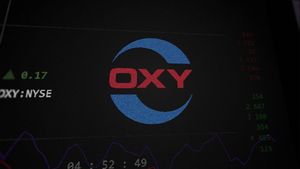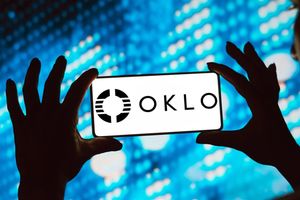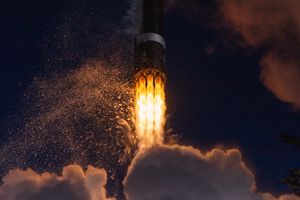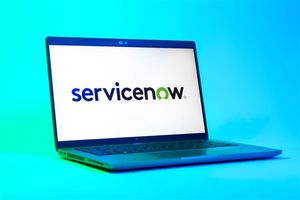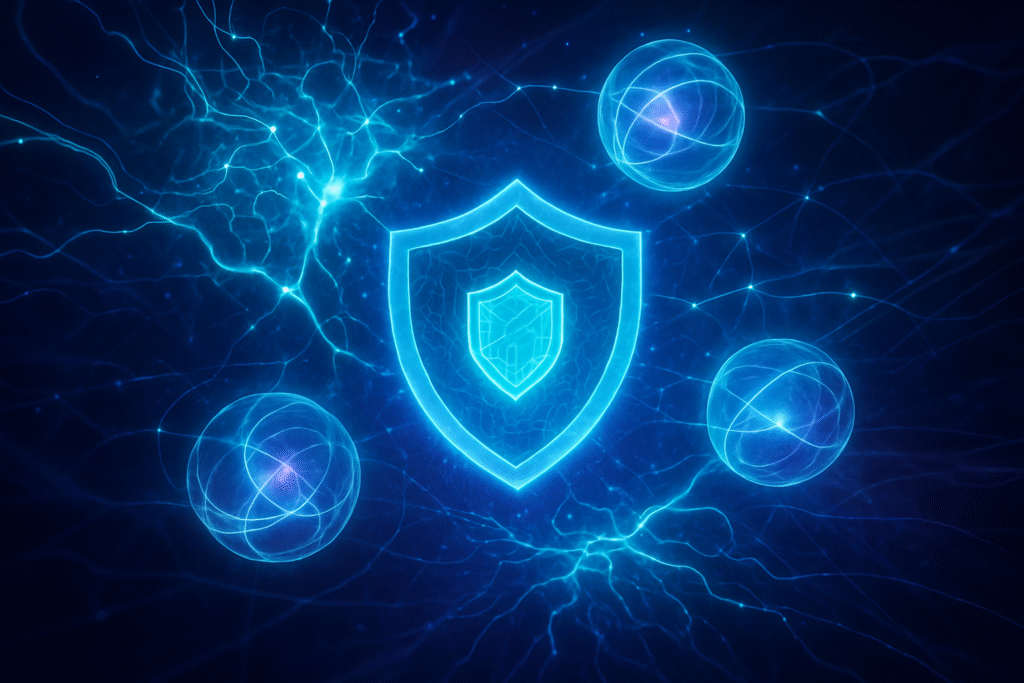
The convergence of Artificial Intelligence (AI) and Quantum Computing is rapidly redefining the landscape of cybersecurity, presenting both formidable challenges and unprecedented opportunities. Far from being a futuristic concept, "AI Meets Quantum, Building Unbreakable Post-Quantum Security" has become a pressing reality, necessitating immediate and strategic action from governments, industries, and individuals alike. As of October 2, 2025, significant progress is being made, alongside growing concerns about the accelerating threat posed by quantum adversaries.
This critical intersection is driven by the looming "Q-Day," the point at which cryptographically relevant quantum computers (CRQCs) could render current public-key encryption methods, the bedrock of modern digital security, obsolete. In response, a global race is underway to develop and deploy Post-Quantum Cryptography (PQC) solutions. AI is emerging as an indispensable tool in this endeavor, not only in designing and optimizing these quantum-resistant algorithms but also in managing their complex deployment and defending against sophisticated, AI-powered cyberattacks in an increasingly quantum-influenced world.
The Technical Crucible: AI Forges Quantum-Resistant Defenses
The integration of AI into the realm of post-quantum cryptography fundamentally alters traditional security approaches, introducing dynamic, optimized, and automated capabilities crucial for future-proofing digital infrastructure. This synergy is particularly vital as the industry transitions from theoretical PQC research to practical deployment.
AI plays a multifaceted role in the design and optimization of PQC algorithms. Machine learning (ML) models, including evolutionary algorithms and neural networks, are employed to explore vast parameter spaces for lattice-based or code-based schemes, refining key sizes, cipher configurations, and other cryptographic parameters. This AI-driven tuning aims to achieve an optimal balance between the often-conflicting demands of security, efficiency, and performance for computationally intensive PQC algorithms. For instance, AI-powered simulations of quantum environments allow researchers to rapidly test and refine quantum encryption protocols by modeling factors like photon interactions and channel noise, accelerating the development of robust quantum-resistant algorithms.
In analyzing PQC solutions, AI serves as a double-edged sword. On the offensive side, AI, especially transformer models, has demonstrated the ability to attack "toy versions" of lattice-based cryptography, even with minimal training data. Researchers at Meta AI (NASDAQ: META) and KTH have shown that artificial neural networks can exploit side-channel vulnerabilities in PQC implementations, such as Kyber, by analyzing power consumption traces to extract secret keys. This highlights that even mathematically sound PQC algorithms can be compromised if their implementations leak information that AI can exploit. Defensively, AI is crucial for real-time threat detection, identifying anomalies that might signal quantum-enabled attacks by analyzing vast streams of network traffic and system logs.
For deploying and managing PQC, AI enables "cryptographic agility," allowing systems to dynamically adjust cryptographic settings or switch between different PQC algorithms (or hybrid classical/PQC schemes) in real-time based on detected threats or changing network conditions. A Reinforcement Learning-based Adaptive PQC Selector (RLA-PQCS) framework, for example, can select optimal PQC algorithms like Kyber, Dilithium, Falcon, and SPHINCS+ based on operational conditions, ensuring both strength and efficiency. Furthermore, AI-driven techniques address the complexity of larger PQC key sizes by automating and optimizing key generation, distribution, and rotation. Companies like SuperQ Quantum are launching AI tools, such as Super PQC Analyst, to diagnose infrastructure for PQC readiness and recommend concrete mitigation strategies.
PQC Analyst, to diagnose infrastructure for PQC readiness and recommend concrete mitigation strategies.
This AI-driven approach differs from previous, largely human-driven PQC development by introducing adaptability, automation, and intelligent optimization. Instead of static protocols, AI enables continuous learning, real-time adjustments, and automated responses to evolving threats. This "anticipatory and adaptive" nature allows for dynamic cryptographic management, exploring parameter spaces too vast for human cryptographers and leading to more robust or efficient designs. Initial reactions from the AI research community and industry experts, up to late 2025, acknowledge both the immense potential for adaptive cybersecurity and significant risks, including the "harvest now, decrypt later" threat and the acceleration of cryptanalysis through AI. There's a consensus that AI is crucial for defense, advocating for "fighting technology fire with technology fire" to create resilient, adaptive cybersecurity environments.
Corporate Chessboard: Companies Vie for Quantum Security Leadership
The intersection of AI, Quantum, and cybersecurity is creating a dynamic competitive landscape, with tech giants, specialized startups, and major AI labs strategically positioning themselves to lead in building quantum-safe solutions. The global post-quantum cryptography (PQC) market is projected to surge from USD 0.42 billion in 2025 to USD 2.84 billion by 2030, at a Compound Annual Growth Rate (CAGR) of 46.2%.
Among tech giants, IBM (NYSE: IBM) is a long-standing leader in quantum computing, actively integrating PQC into its cybersecurity solutions, including Hardware Security Modules (HSMs) and key management systems. Google (NASDAQ: GOOGL), through Google Quantum AI, focuses on developing transformative quantum computing technologies and participates in PQC initiatives. Microsoft (NASDAQ: MSFT) with Azure Quantum, offers cloud-based platforms for quantum algorithm development and is a partner in Quantinuum, which provides quantum software solutions for cybersecurity. Amazon Web Services (AWS) (NASDAQ: AMZN) is integrating advanced quantum processors into its Braket service and developing its proprietary quantum chip, Ocelot, while leading with enterprise-grade quantum-safe hardware and software. Thales (EPA: HO) is embedding PQC into its HSMs and co-authored the Falcon algorithm, a NIST-selected PQC standard. Palo Alto Networks (NASDAQ: PANW) is also a major player, offering enterprise-grade quantum-safe hardware and software solutions.
Startups and specialist PQC companies are carving out niches with innovative solutions. PQShield (UK) provides hardware, firmware, and SDKs for embedded devices and mobile, focusing on encryption systems resistant to quantum attacks. ID Quantique (Switzerland) is a leader in quantum-safe crypto, offering quantum cybersecurity products, often leveraging Quantum Key Distribution (QKD). ISARA (Canada) specializes in quantum computer-resistant software, providing crypto-flexible and quantum-safe tools for cryptographic inventory and risk assessment. QuSecure (US) offers a post-quantum cryptography software solution, QuProtect R3, with cryptographic agility, controls, and insights, partnering with companies like Accenture (NYSE: ACN) for PQC migration. SEALSQ (NASDAQ: LAES) is developing AI-powered security chips that embed PQC encryption at the hardware level, crucial for future IoT and 5G environments. A consortium of CyberSeQ (Germany), Quantum Brilliance (Australia-Germany), and LuxProvide (Luxembourg) announced a partnership in October 2025 to advance PQC with certified randomness, with CyberSeQ specifically delivering AI-powered cybersecurity solutions.
The competitive landscape is marked by the dominance of established players like NXP Semiconductor (NASDAQ: NXPI), Thales, AWS, Palo Alto Networks, and IDEMIA, which collectively hold a significant market share. These companies leverage existing client bases and cloud infrastructure. However, startups offer agility and specialization, often partnering with larger entities. The disruption to existing products and services will be profound, necessitating a massive upgrade cycle for hardware, software, and protocols across all sectors. The combination of AI and quantum computing introduces new sophisticated attack vectors, demanding a "two-pronged defense strategy: quantum resilience and AI-enabled cybersecurity." This complexity is also driving demand for new services like PQC-as-a-service and specialized consulting, creating new market opportunities.
Wider Significance: Reshaping Digital Trust and Global Order
The intersection of AI, Quantum, and cybersecurity for building post-quantum security is not merely another technological advancement; it is a critical frontier that redefines digital trust, national security, and the very fabric of our interconnected world. Developments leading up to October 2025 underscore the urgency and transformative nature of this convergence.
The primary significance stems from the existential threat of quantum computers to current public-key cryptography. Shor's algorithm, if executed on a sufficiently powerful quantum computer, could break widely used encryption methods like RSA and ECC, which secure everything from online banking to classified government communications. This "Q-Day" scenario drives the "harvest now, decrypt later" concern, where adversaries are already collecting encrypted data, anticipating future quantum decryption capabilities. In response, the National Institute of Standards and Technology (NIST) has finalized several foundational PQC algorithms, marking a global shift towards quantum-resistant solutions.
This development fits into the broader AI landscape as a defining characteristic of the ongoing digital revolution and technological convergence. AI is no longer just a tool for automation or data analysis; it is becoming an indispensable co-architect of foundational digital security. Quantum computing is poised to "supercharge" AI's analytical capabilities, particularly for tasks like risk analysis and identifying complex cyberattacks currently beyond classical systems. This could lead to a "next stage of AI" that classical computers cannot achieve. The rise of Generative AI (GenAI) and Agentic AI further amplifies this, enabling automated threat detection, response, and predictive security models. This era is often described as a "second quantum revolution," likened to the nuclear revolution, with the potential to reshape global order and societal structures.
However, this transformative potential comes with significant societal and ethical impacts and potential concerns. The most immediate threat is the potential collapse of current encryption, which could undermine global financial systems, secure communications, and military command structures. Beyond this, quantum sensing technologies could enable unprecedented levels of surveillance, raising profound privacy concerns. The dual-use nature of AI and quantum means that advancements for defense can also be weaponized, leading to an "AI arms race" where sophisticated AI systems could outpace human ability to understand and counter their strategies. This could exacerbate existing technological divides, creating unequal access to advanced security and computational power, and raising ethical questions about control, accountability, and bias within AI models. The disruptive potential necessitates robust governance and regulatory frameworks, emphasizing international collaboration to mitigate these new threats.
Compared to previous AI milestones, this development addresses an existential threat to foundational security that was not present with earlier advancements like expert systems or early machine learning. While those breakthroughs transformed various industries, they did not inherently challenge the underlying security mechanisms of digital communication. The current era's shift from "if" to "when" for quantum's impact, exemplified by Google's (NASDAQ: GOOGL) achievement of "quantum supremacy" in 2019, underscores its unique significance. This is a dual-purpose innovation, where AI is both a tool for creating quantum-resistant defenses and a formidable weapon for quantum-enhanced cyberattacks, demanding a proactive and adaptive security posture.
Future Horizons: Navigating the Quantum-AI Security Landscape
The synergistic convergence of AI, Quantum, and cybersecurity is charting a course for unprecedented advancements and challenges in the coming years. Experts predict a rapid evolution in how digital assets are secured against future threats.
In the near-term (up to ~2030), the focus is heavily on Post-Quantum Cryptography (PQC) standardization and deployment. NIST has finalized several foundational PQC algorithms, including ML-KEM, ML-DSA, and SLH-DSA, with additional standards for FALCON (FN-DSA) and HQC expected in 2025. This marks a critical transition from research to widespread deployment, becoming a regulatory compliance imperative. The European Union, for instance, aims for critical infrastructure to transition to PQC by the end of 2030. AI will continue to bolster classical defenses while actively preparing for the quantum era, identifying vulnerable systems and managing cryptographic assets for PQC transition. Hybrid cryptographic schemes, combining traditional and PQC algorithms, will become a standard transitional strategy to ensure security and backward compatibility.
Looking long-term (beyond ~2030), widespread PQC adoption and "crypto-agility" will be the norm, with AI dynamically managing cryptographic choices based on evolving threats. AI-enhanced Quantum Key Distribution (QKD) and quantum-secured networks will see increased deployment in high-security environments, with AI optimizing these systems and monitoring for eavesdropping. Critically, Quantum Machine Learning (QML) will emerge as a powerful tool for cybersecurity, leveraging quantum computers to accelerate threat detection, vulnerability analysis, and potentially even break or bolster cryptographic systems by identifying patterns invisible to classical ML. Comprehensive AI-driven post-quantum security frameworks will provide automated threat response, optimized key management, and continuous security assurance against both classical and quantum attacks.
Potential applications and use cases on the horizon include intelligent threat detection and response, with AI (potentially quantum-enhanced) identifying sophisticated AI-driven malware, deepfake attacks, and zero-day exploits at unprecedented speeds. Quantum-resilient critical infrastructure, secure IoT, and 6G communications will rely heavily on PQC algorithms and AI systems for monitoring and management. Automated vulnerability discovery and remediation, optimized cryptographic key management, and enhanced supply chain security will also become standard practices.
However, significant challenges need to be addressed. The uncertainty of "Q-Day" makes strategic planning difficult, although the consensus is "when," not "if." The complexity and cost of PQC migration are monumental, requiring comprehensive asset inventories, prioritization, and significant investment. Hardware limitations and scalability of current quantum technologies remain hurdles, as does a critical talent gap in quantum computing, AI, and PQC expertise. The dual-use nature of AI and quantum means the same capabilities for defense can be weaponized, leading to an "AI vs. AI at quantum speed" arms race. Standardization and interoperability across different vendors and nations also present ongoing challenges, alongside ethical and societal implications regarding surveillance, privacy, and the potential for deepfake-driven misinformation.
Experts predict that 2025 will be a critical year for accelerating PQC deployment, especially following the finalization of key NIST standards. There will be a surge in sophisticated, AI-driven cyberattacks, necessitating a strong focus on crypto-agility and hybrid solutions. While large-scale quantum computers are still some years away, early stages of quantum-enhanced AI for defense are already being explored in experimental cryptanalysis and QML applications. Governments worldwide will continue to invest billions in quantum technologies, recognizing their strategic importance, and increased collaboration between governments, academia, and industry will be crucial for developing robust quantum-safe solutions.
The Quantum-AI Imperative: A Call to Action
The intersection of AI, Quantum, and cybersecurity presents a complex landscape of opportunities and threats that demands immediate attention and strategic foresight. The imperative to build "unbreakable post-quantum security" is no longer a distant concern but a pressing reality, driven by the impending threat of cryptographically relevant quantum computers.
Key takeaways include AI's indispensable role in designing, analyzing, and deploying PQC solutions, from optimizing algorithms and detecting vulnerabilities to enabling cryptographic agility and automated threat response. This marks a profound shift in AI's historical trajectory, elevating it from a computational enhancer to a co-architect of foundational digital trust. However, the dual-use nature of these technologies means that AI also poses a significant threat, capable of accelerating sophisticated cyberattacks and exploiting even post-quantum algorithms. The "harvest now, decrypt later" threat remains an immediate and active risk, underscoring the urgency of PQC migration.
The significance of this development in AI history is immense. It moves AI beyond merely solving problems to actively future-proofing our digital civilization against an existential cyber threat. This era marks a "second quantum revolution," fundamentally reshaping global power dynamics, military capabilities, and various industries. Unlike previous AI milestones, this convergence directly addresses a foundational security challenge to the entire digital world, demanding a proactive rather than reactive security posture.
The long-term impact will be a profound reshaping of cybersecurity, characterized by continuous crypto-agility and AI-driven security operations that autonomously detect and mitigate threats. Maintaining trust in critical infrastructure, global commerce, and governmental operations hinges on the successful, collaborative, and continuous development and implementation of quantum-resistant security measures, with AI playing a central, often unseen, role.
In the coming weeks and months, watch for several critical developments. Product launches such as SuperQ Quantum's full PQC Module suite and SEALSQ's Quantum Shield QS7001 chip (mid-November 2025) will bring tangible PQC solutions to market. Key industry events like the IQT Quantum + AI Summit (October 20-21, 2025) and the PQC Forum (October 27, 2025) will highlight current strategies and practical implementation challenges. Governmental initiatives, like the White House's designation of AI and quantum as top research priorities for fiscal year 2027, signal sustained commitment. Continued progress in quantum computing hardware from companies like Rigetti and IonQ, alongside collaborative initiatives such as the Quantum Brilliance, CyberSeQ, and LuxProvide partnership, will further advance practical PQC deployment. Finally, the ongoing evolution of the threat landscape, with increased AI-powered cyberattacks and risks associated with ubiquitous AI tools, will keep the pressure on for rapid and effective quantum-safe solutions. The coming period is crucial for observing how these theoretical advancements translate into tangible, deployed security solutions and how organizations globally respond to the "start now" call to action for quantum safety.
This content is intended for informational purposes only and represents analysis of current AI developments.
TokenRing AI delivers enterprise-grade solutions for multi-agent AI workflow orchestration, AI-powered development tools, and seamless remote collaboration platforms. For more information, visit https://www.tokenring.ai/.


